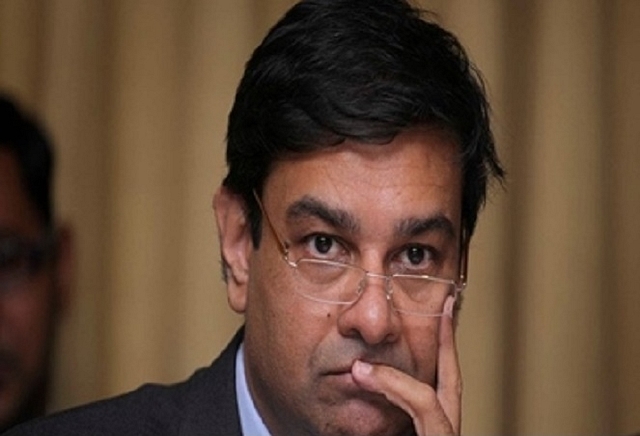
Go For It, Urjit. There’s Never Going To Be A Better Time To Cut Rates Than Now
The next monetary policy will be the first one to be decided by a six-member Monetary Policy Committee (MPC), and Patel’s will be only one voice in the committee.
While it is par for the course to say inflation is the RBI’s first priority, and growth second, the responsibility that seldom gets weightage in policy analysis is the third one: the health of the banking system.
Reserve Bank Governor Urjit Patel appears to have sent “dovish” signalsto a bunch of senior economists in a pre-monetary policy interaction last week.The policy is due on 4 October, and “dovish” in this context means a stanceconducive to lower interest rates, even if this does not happen in the comingpolicy.
But Patel should take the plunge, for he cannot get a better time to cutrates. Food inflation is down, industrial production is flat, market bondyields are slipping, and banks need the boost from lower policy rates.
The Governor’s dovishness has been deduced from three remarks he is saidto have made to the group of economists: that he does not believe the new goodsand services tax will be inflationary, that the uptick to inflation on housingdue to the release of the Seventh Pay Commission award should prompt areduction in the weightage to housing in the consumer prices index, and mostimportantly, growth was also an objective of monetary policy. The next monetarypolicy will be the first one to be decided by a six-member Monetary PolicyCommittee (MPC), and Patel’s will be only one voice in the committee.
Given the downtrend in CPI and also the poor industrial growth indicatedby the Index of Industrial Production (minus 0.2 percent in April-July 2016),no Governor will be pilloried for cutting rates, but Patel may be hesitant todo so because he would not want the markets to presume that he is buckling underpressure from government to cut rates. Hence the likelihood that rates will becut in the next policy rather than in the very first one. If the MPC votingends in a tie, Patel could well use his casting vote to maintain rates todisplay autonomy.
However, there is a stronger case to cut rates now than ever before.While it is par for the course to say inflation is the RBI’s first priority,and growth second, the responsibility that seldom gets weightage in policyanalysis is the third one: the health of the banking system.
Right now, bank balance-sheets, especially the 70 percent that is in thepublic sector, are under strain, with 15.4percent of assets (loans) either going bad or stressed due to the higherprobability of defaults. At a total advances level of Rs 72 lakh crore(excluding food credit), gross stressed and non-performing assets (NPAs) wouldthus be at over Rs 11 lakh crore.
Not all of this is a problem, since banks would have made provisions forsome of the bad loans. But the loss coverage ratio as at the end of March 2015was at just 57 percent of gross NPAs, down from over 72 percent four yearsbefore that. It is clear that the UPA period weakened the banking system likenever before.
In the fiscal year 2015-16, banks reported huge losses – and the trendcontinued in the first quarter of 2016-17 – precisely because they had toprovide for more losses on their balance-sheets. Under extant norms, banks haveto provide 100 percent for loss assets, and 15 percent for sub-standard assets,and 25-100 percent for sub-standard assets that dip into doubtful category dueto the length for which some accounts remained sub-standard. The longer theperiod a loan remains in the sub-standard category, the higher the provisioningneeded.
Due to this reality, experts believe that banks will continue to bleedwell into the quarter ending September 2016, before bottom-lines start turningaround. Not all banks will look viable even after this quarter.
This is where the RBI, wearing its third hat as guardian of the healthof the banking system, ought to focus. The point is simple: banks can return tonormal either by the government pumping in capital to enable banks to write offlosses faster, or through a higher generation of profits. This is where a decentrate cut helps.
A 1 percent cut in rates, spread over two or three quarters, and partlyfront-loaded, will help lift public sector bank bottom-lines more than a Rs25,000 crore injection of capital to speed up loan writeoffs. This is becauseevery fall in the rate allows banks to show gains on their long-dated securityholdings. When the RBI is asking government to stick to its fiscal deficittarget, surely it can do its bit to ensure that by helping banks generateprofits from lower rates?
Between March and now, the yield on the 10-year government bond (abenchmark for the markets) has fallen by more than 1 percent and is now at 6.78percent (as of 26 September mid-morning).
This is why public sector bank stocks are reviving. While the Nifty Bankindex rose 53 percent from its 52-week lows, the PSU Bank index rose 73percent.
If Patel is listening to the markets, and the MPC too is hooked on to amarket terminal, it should know that it can do most good to bank bottom-lines bycutting rates aggressively. Inflation may not be fully down as yet, but therewill not be another opportunity to cut rates as now – with market ratestrending down, industrial growth stuck in a negative groove, inflation expectedto trend down, and bank profits being held hostage by needlessly high policyrates.
Go for it, Urjit. There’s never been a better time to cut rates than now. Waiting for all the data would mean an opportunity lost.